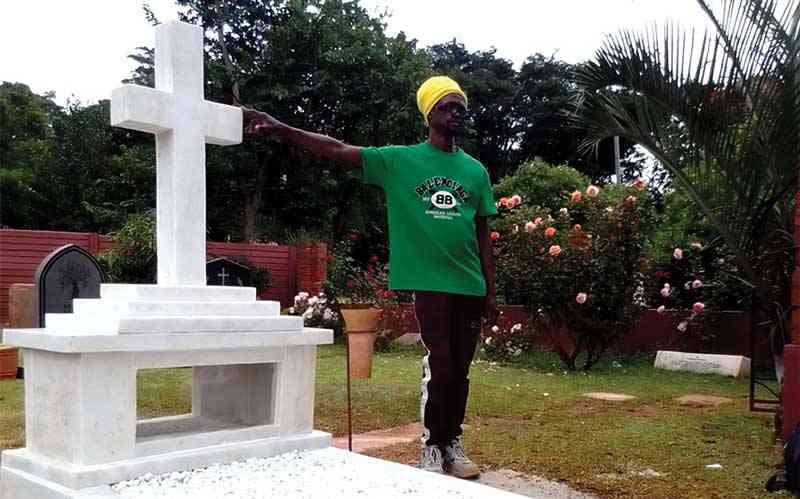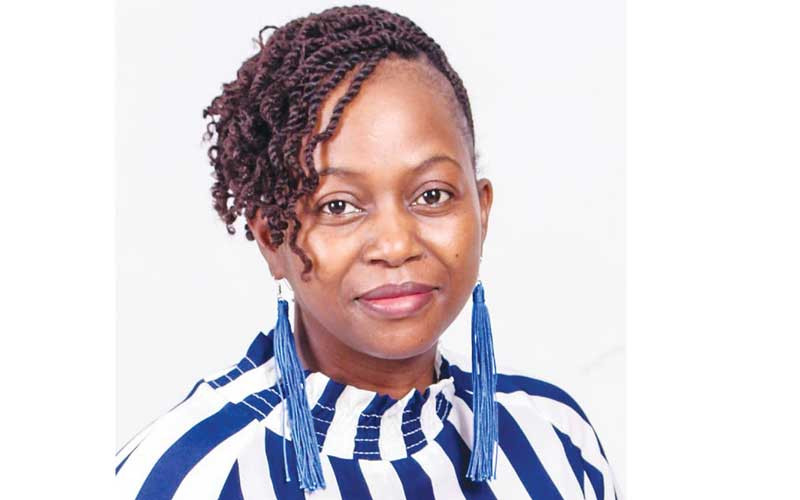
MULTI-TALENTED visual artist and mbira player Davis Sibanda famed for wood carvings, bone art and stone sculpturing has extended his creativity to tombstone making.
Sibanda named his tombstone monument Ray of Sunshine because of the white lustre which soothes bereavement and symbolises eternity.
Ever since he branched into tombstone designing he has been impressed by the number of customers requesting their gravestone designs on dolomite and black granite, all-weather stones perfect for the monuments.
Sibanda said he is not bothered that tombstones are linked to sorrow and mourning because he approaches them from an artist point of view.
“I thank God because I am capable of shifting moods from depressions and miseries to greater moments of relief in times of difficulties though producing captivating and comforting artworks which unites people into full of hope conversations,” he said.
“I was taught carving on stone and wood from childhood, and I took it upon myself to experiment with other supple material such as bones and metals. Custom-made tombstone designs have been my recent innovations and especially on dolomite and other semi-precious stones.
“Most people are used to black granite tombstones, and I brought in a new feel to ease the tension that is usually associated with funerals and bereavement. Life goes on for those remaining behind and they need to be strengthened to face other life challenges.”
Tree cutting is common wherever there is housing and road construction and many people fetch or buy the wood for domestic use as firewood and fencing poles.
- Amadhuve on a mission to uplift fellow female artists
- Unpacking Christ; our wisdom (2)
- Sunday word: Battle of Biblical 'Armageddon'
- Grace tidings: Beware of false teachers and bad doctrine (Part 2)
Keep Reading
To the contrary, Sibanda hunts for uprooted tree trunks which he cuts to suit able sizes.
Sibanda said his wood carvings were suitable for both indoor and outdoor displays and were intended to provide food for thought for people about their nature and environment.
Despite the fact that stone carving popularised him through the Birth of Jesus Christ monument, he still believes there is room for recognition as a wood carving artist.
“There are only three wood carvers here at the Chitungwiza Arts Centre and the door is wide open especially to the youths who wish to explore their talent. Sculpturing is a difficult trade because it’s culture-oriented,” he said.
“Every community has its own resources such as clay, stones, wood, metal, plastic and many other materials from which people can build their ingenious and create economies. Cultural development can be easily noticed through a people’s response to their environment and available resources.”
Sibanda, who is also a musician, is yet to register his much-desired success as a mbira player because his Guruuswa Mbira music album, on which he was backed by the Zviitiko Mbire Mbira Ensemble, did not gain much popularity on the market. He plays mbira during his spare time.
“The beauty of art must not only be seen through the natural quality of materials used, but through its ability to lift people’s spirits and imaginations into a hopeful world of make-believe which makes them think positively or get entertained,” he explained.
“Bone art is one of my trades and I always create my work from animal skeletons which I usually find in rural areas. I am often lucky with dry bones from abattoirs which I turn into artistry.”
Like any other artists, Sibanda laments a lack of co-ordinated efforts in uplifting art.
Sibanda pointed out that the arts industry can only grow when there is funding and grooming for schoolchildren and school-leavers.
“We need sponsors and competitions that help schoolchildren and school-leavers in realising their dreams as artists and professionals. The arts require a lot of patience and a focused mindset which can only be achieved after a long time of both parental and school support,” he added.







